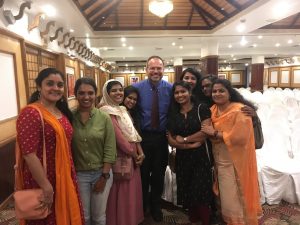 Unlike this field of research, international outreach is not a new to Van Rompay. Almost 20 years ago he started the nonprofit organization,Sahaya Internationalto offer support and build awareness of healthcare, education, environmental, and socio-economic grassroots programs already existing in developing countries. The nonprofit has raised an impressive 3.8 million dollars and spans from India, Kenya, Vietnam, and the Philippines. Van Rompay advices other scientists interested in international outreach not to be afraid of travelling to far and remote places. However, don’t let travel stand in your way. He emphasizes the importance of outreach within your own community and hopes scientists will continue trying to do a better job of discussing their research with the public.
Unlike this field of research, international outreach is not a new to Van Rompay. Almost 20 years ago he started the nonprofit organization,Sahaya Internationalto offer support and build awareness of healthcare, education, environmental, and socio-economic grassroots programs already existing in developing countries. The nonprofit has raised an impressive 3.8 million dollars and spans from India, Kenya, Vietnam, and the Philippines. Van Rompay advices other scientists interested in international outreach not to be afraid of travelling to far and remote places. However, don’t let travel stand in your way. He emphasizes the importance of outreach within your own community and hopes scientists will continue trying to do a better job of discussing their research with the public.